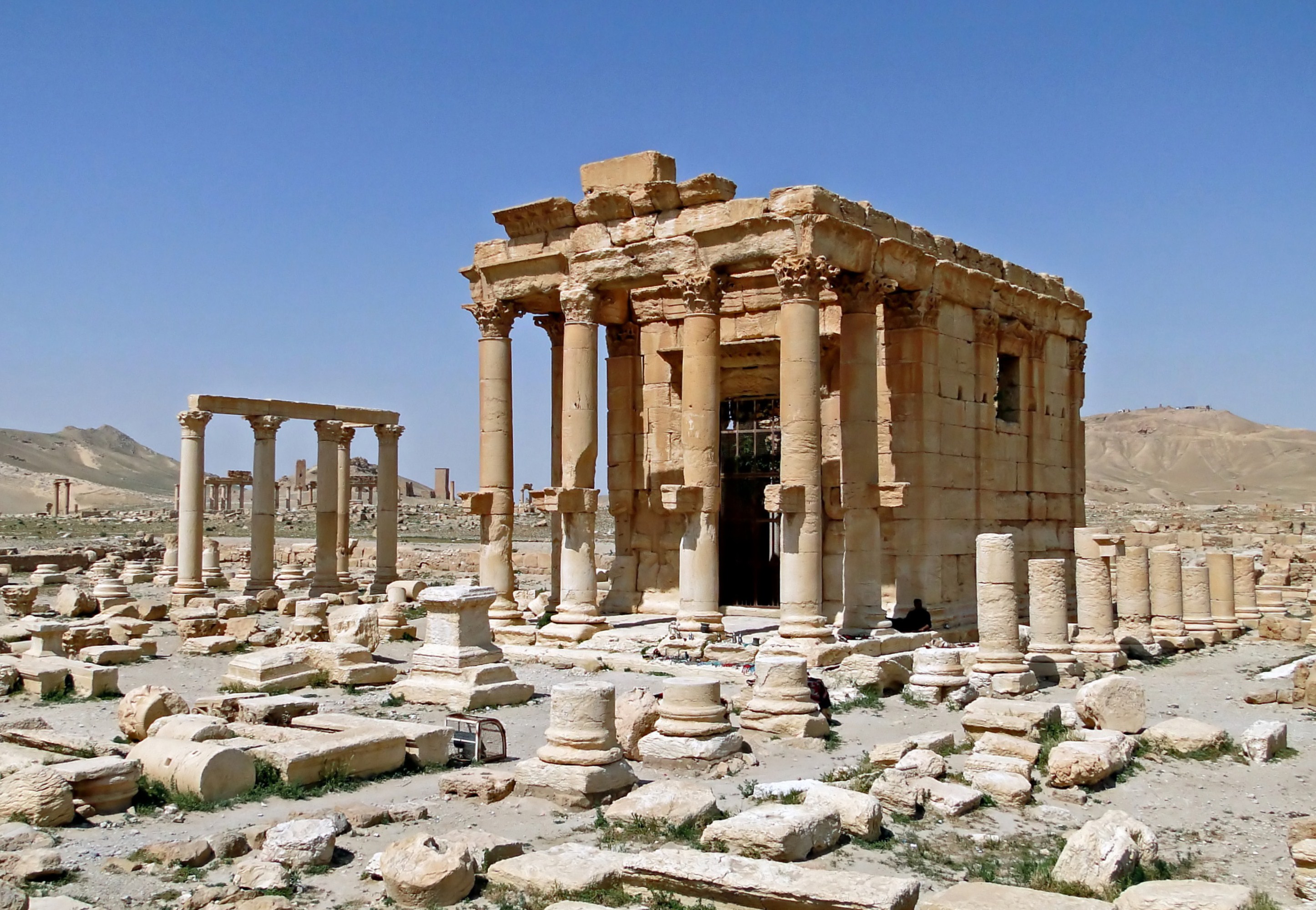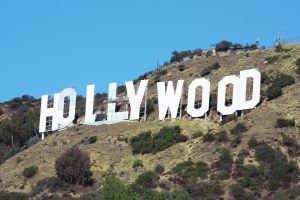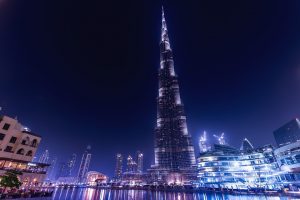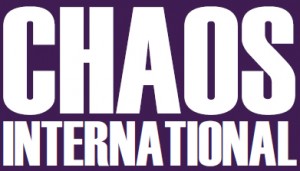Jul 7, 2015 | Communitarianism, cultural diversity, Culture en, English, Passage au crible (English), Security, Terrorism
By Alexandre Bohas
Translation: Lawrence Myers
Passage au crible n° 128
 Source: Wikipedia
Source: Wikipedia
With the capture of Palmyra by Islamic State troops in Iraq and in the Levant (ISIL or Daesh in Arabic) in May, one of the most prestigious sites of antiquity is now threatened with extinction. This event testifies to ideological motives of this self-proclaimed caliphate against cultural buildings.
> Historical background
> Theoretical framework
> Analysis
> References
Historical background
In recent years, attacks against religious monuments by various groups claiming radical Islam have multiplied. These include the Buddhas of Bamiyan in 2001, which were blown up by dynamite by the Afghani Taliban regime, or the attacks on Muslim mausoleums in Timbuktu in 2012, by rebels fighting against the Malian regime during their occupation of the city. To these events, we add political instability in Egypt and Libya; a situation which favored the pillaging of numerous museums and archaeological sites, both for economic and religious reasons.
Otherwise, civil wars in Iraq and Syria have created the conditions for the long-term establishment of ISIL in certain parts of both countries. Yet, this group allegedly occupies 4,500 archaeological sites. Its supporters attacked Mesopotamian sites, but also Muslim places of worship like the tomb of Jonah in Mosul. In Syria, 90% of destruction focused on Muslim artifacts such as tombs, altars and mosques, the latter dating from the 13th and 14th centuries.
Since the end of February 2015, the sacking perpetrated in the Mosul museum as well as against the Assyrian and Parthian sites of Nimrud and Hatra have been carefully filmed and broadcast on social networks. These devastations have provoked consternation in the West as well as condemnation by UNESCO. For that matter, UNESCO is proving to be incapable of protecting these buildings classified as World Heritage Sites.
Theoretical framework
1. A reaction against the pluralization of the world. Globalization brings about a “pluralization” (Cerny) of modern societies. By promoting flows and transnational movements in cultural and socioeconomic terms, it provokes isolationism and a reaction against that which is other than oneself, emblematic of a “brutalization of the world” (Laroche). In this case, the vandalism of monuments committed by ISIL aims to do away with specificities and syncretism, both past and present, in the name of a purified, extremist and dogmatic Islam.
2. The transnationalisation of a quest for identity. These cultural destructions in Iraq, Libya and Mali are exploited in order to manipulate individuals who are both poorly integrated and disadvantaged. These individuals therefore embrace a fanatic ideology, which gives purpose to their empty existence (Hoffer). Building on a fundamentalist and antimodernist interpretation of Islam, it offers its supporters, from various backgrounds, a simplified vision of the world and also offers them a transnational identity.
Analysis
Far from being spontaneous, these sackings have been carefully calculated and organized. They are justified by the refusal to commit idolatry, forbidden by all monotheist religions. Modeled after the image of the iconoclastic controversy (8th century) and English Puritanism (17th century) in Christianity, ISIL invokes the idolatrous character of all devotion and of each place of worship, current or past, which is not directly addressed to God. In this perspective, only ISIL can be a religious practice. The sacking of Nimrod and Hatra resulted precisely from the outrageous application of this fundamental principal of Islam, which figures on ISIL’s emblem: «لا إله إلا الله » (“There is no god but God”).
ISIL films showing the devastations of Hatra or the Museum of Mosul are the result of an elaborate strategy. Along these lines, analysts have admitted their doubt regarding the authenticity of certain destroyed statues. Plaster copies were allegedly used since the original statues were supposedly sold beforehand in order to finance the war effort. Otherwise, the combatants appearing in ISIL propaganda films were identified by their accents: they allegedly come from Africa, the Indian subcontinent and the Maghreb. In other words, none of them might actually be from Mashriq, the region from Syria to Egypt. Therefore, this video is purportedly intended to recruit Muslims living far from theaters of conflict and who are often marginalized. In this regard, let us recall that Daesh forces are largely made of foreign fighters.
Besides this, it is important to consider the global attraction that ISIL exerts on certain young Muslims. This appeal can be likened to what secular religions were doing in the 1950s as described by Eric Hoffer. Today these groups of fanatic believers find a favorable echo in the extremist Islam that they advocate. All the more so since globalization reinforces their appeal by increasing their audience. The deterritorialization of relationships that characterize the strength of these communalist movements are made possible by new technologies, notably the Internet. But globalization upsets the traditional frameworks that unite cultures and societies. In so doing, it elicits isolationism that often seek to violently reaffirm undermined dogmas. Thus the cultural destructions by ISIL testify to the will to obliterate the diversity of religious, historical and cultural practices characteristic of Mesopotamia.
References
Cerny Philip G., Rethinking World Politics: A Theory of Transnational Pluralism, New York, Oxford University Press, 2010.
Evin Florence, « L’État islamique met en scène la destruction de la cité antique d’Hatra », Le Monde, 4 avril 2015.
Hoffer Eric, The True Believer: Thoughts on the Nature of Mass Movements, New York, Harber & Brothers, 1951.
Laroche Josepha, La Brutalisation du monde. Du retrait des États à la décivilisation, Montréal, Liber, 2011.
Schama Simon, « Artefacts Under Attack », Financial Times, 13 March 2015.
Dec 30, 2014 | Cultural industries, Passage au crible (English), Publications (English), Security
By Alexandre Bohas
Translation: Lawrence Myers
Passage au crible n° 123
 Source: Wikimedia
Source: Wikimedia
Sony, which just filmed and produced The Interview, was recently threatened by terrorist attacks. The film derides the North Korean regime and ends with the assassination of the current president, Kim Jon-un. Previously, the firm’s IT system had undergone attacks and confidential information that it possesses was compromised. For now, it has stopped the distribution of the production.
Sony studios – known by the name Columbia TriStar before being bought by the Japanese firm – produced a satiric comedy on the North Korean regime in 2014, produced by Seth Rogen and Evan Goldberg. This full-length feature film tells the story of two reporters who, after having obtained an interview with the current dictator, receive orders to assassinate him. Originally set for release next fall, it was censured by North Korea, which threatened to take “merciless” actions against the United States.
> Historical background
> Theoretical framework
> Analysis
> References
Historical background
In November, Sony Pictures Entertainment’s computer systems were hacked by self-proclaimed hackers, The Guardians of Peace. Yet, according to the FBI, the aforementioned group liaised with North Korea. This incursion led to revelations concerning the upcoming productions of the major film studio, the salaries of its top leaders as well as the contents of their Internet communication. This group otherwise threatened terrorist attacks on cinemas where the film would be shown. Following these warnings, which sparked the cancellation of its release in many film operating companies, the studio itself suspended the release and opted for a limited online launch. This decision was then received negatively by numerous critics, including President Barack Obama.
Theoretical framework
1. The coming of a post-international era. Crossed by contradictory trends of integration and fragmentation, the world has left the inter-state era consecrated by the Treaties of Westphalia, signed in 1648. Henceforth, it is characterized by multiple actors, identities superposed and loyalties fragmented. We must also consider the world broadly, in the same way that James Rosenau, Yale Ferguson and Richard Mansbach did, by using the concepts of polities and spaces of power.
2. A political economy of culture. Based on the inseparability of the cultural and social spheres, this new area of research contributes to the enrichment of the analysis of international relations because it integrates the semiotic and ideological aspects of transnational phenomena. According to this approach, collective representations reflect the society in which they are observed, all the while taking part in its creation. In this way, the analysis of culture implies an understanding of the different processes of massive diffusion and symbolic appropriation, which form an essential issue for every actor on the world stage.
Analysis
Governed with an iron fist and in a practically autarkic manner, North Korea may fear, despite its mastery of the means of broadcasting and telecommunication, that this satiric comedy might create internal disorder. Besides that, if the film is an international success, it will help to shape the collective representations of many countries beyond the United States, notably by conveying an exaggerated and devaluing image of the country. It is noteworthy that otherwise, its regime has also used cinema as a means of propaganda and diffusion of ideas. In this respect, we can recall that Kim Jong-il, the current leader’s father, had initiated large-scale film productions – like Souls Protest (2000) -, which experienced limited success outside the country’s borders.
Today the digital era highlights and exacerbates these already existing conflicts. Like the leaderless and non-state network Anonymous, states, whether they be authoritarian or democratic, experience or practice cyberattacks, sometimes taking recourse in the services of professional hackers. North Korea allegedly has an elite unit of 3,000 experts in the matter. In this case, these interventions can target private organizations, – large newspapers – but also intranet servers belonging to administrations, like that of the Department of State, thus harming the targeted entity in multiple ways. It can then become a question of paralyzing its activity, ruining its reputation and/or accessing its secret documents, in order to penalize it economically, symbolically and politically.
In Sony’s case, in addition to the shortfall in earnings of the film The Interview, produced but not marketed in theaters, confidential data as well as email exchanges between top company officials have been rendered public by these operations. Yet, via the correspondence between them, these executives give proof of their character, which alternates between racist, unscrupulous and scornful. In addition, this attack came while Sony had just overcome a massive hacking of its PlayStation network. Clearly, we are far from traditional, inter-state conflicts that oppose two armies on a battlefield, and on which Realist theorists concentrate their analyses.
Quite the contrary, we are witnessing a confrontation which sets a major Hollywood film studio – operating on the world scale and supported by Washington – against a criminal group suspected of being supported by North Korea. In this asymmetrical shock, one of the largest companies in global cinema goes against the opinion of the government of its country by effectively submitting to the blackmail of unknown activists, exploiting individuals’ fears over possible terrorist attacks, which supposedly would be committed in movie theaters. We are witnessing disorder, “turbulence” – in the words of Rosenau – during which a few individuals succeed in destabilizing an American giant with an annual turnover of 8 billion dollars. This demonstrates that from now on, international relations have lost their inter-state character.
References
Best Jacqueline and Paterson Matthew (eds.), Cultural Political Economy, London, Routledge, 2010.
Ferguson Yale, Mansbach Richard, A World of Polities. Essays on Global Politics, Abingdon: Routledge, 2008.
Rosenau James N., Turbulence in World Politics: A Theory of Change and Continuity, Princeton, Princeton University Press, 1990.
Sum Ngai-Lim, Jessop Bob, Towards A Cultural Political Economy. Putting Culture in its Place in Political Economy, Cheltenham, E. Elgar Publishing, 2013.
Sep 24, 2013 | Globalization, International commerce, Passage au crible (English)
By Alexandre Bohas
Translation: Frédéric Ocrisse-Aka
Passage au crible n°91

Pixabay
Transatlantic discussions to reach a free trade agreement were disrupted in spring 2013 by a new blocking in the cultural sector. Recently, a new showdown took place during the first talks on the proposed free trade agreement between Europe and America. Finally, at the insistence of countries like France, a limitation to the laissez-faire, laissez-passer, was adopted once again.
> Historical background
> Theoretical framework
> Analysis
> References
Historical background
In France, the demand for specific trade provisions originates from the opposition to the signing of the Blum-Byrnes agreements in 1946. These agreements between Paris and Washington were putting an end to the French support policies to the film industry in exchange of the American post-war reconstruction assistance. In the nineties, this disruptive transatlantic issue had several twists and turns during the Uruguay Round and the MAI (Multilateral Agreement on Investment). These tensions indicate two diverging approaches of the film industry: one perceiving it only as entertainment, and another for which it is a full dimension of the artistic field.
These oppositions led to the creation of a transnational coalition for cultural diversity, a coalition that gather both country like France or Canada or non-state actors such as representatives of the audiovisual sector. Its actions focused primarily on the recognition of a derogatory framework to that of the World Trade Organization, which allows state quota systems and funding in the audiovisual sector. Then it endeavored to set this principle in international law, with the signing of the Universal Declaration on Cultural Diversity in 2002 and the Convention on Protection and Promotion of the Diversity of Cultural Expressions in 2005.
Theoretical framework
A challenged globalization of culture. If globalization is now understood as an economic, social and political process, its impact on the habitus and behaviors are underestimated or ignored by a latent materialism. It is often underestimated because of differentiated receptions (Liebes, Katz), the primacy given to the national community (Smith) and the neglected power of economic and cultural narratives. Moreover, the strengthening of cultural interconnections, bred by structural changes in the global sphere, result in discontinuous manner in practices , common ideologies and, for some, the emergence of a fragile sense of belonging the same world (Robertson, Beck).
Sovereignty in the knowledge organization. Medieval jurists established it as the power in last resort, “the absolute power of a Republic” (Bodin); the sovereignty is a cornerstone of the theory of realism (Morgenthau) because it identifies the country as the basic unit of the international scene. It denies ties of transnational power that cross borders and unite societies unevenly (Emmanuel and Wallerstein), and it also legitimate state policies aiming at preserving a cultural autonomy which is today undermined by the globalization (Laroche, Bohas).
Analysis
The move for a cultural exception is based on a three parts claim: cultural, political and economic. Firstly, it aims to keep safe the identity of each people facing upheavals related to the shrinkage of the world. It seems imperative to preserve the values and norms of individuals. Meanwhile, many countries consider that the preservation of identity go with the keeping of place to create fine arts, literature, as well as films. However, in case of trade liberalization, the business would be even, more threatened by Hollywood capital supremacy. Then, on the political ground, as expressed in negotiations of the Uruguay Round (Gdansk, November 1993), the French president at that time, François Mitterrand : “What is at stake is the cultural identity of our nation, it is the right of every people to have its culture”.
Finally, the audiovisual sectors and its derivatives constitute vectors of material and ideological eco-systems economies. In other words, they have a civilization-like grasp over people by shaping lifestyles. Yet, is this sole exception enough to preserve the cohesion among illusory communities? Indeed, if it allows national industries to survive, it does not promote the progress of diversity. It is clear that an increasing number of national works have no public, while professionals struggle to finance them. On the contrary, the only contents being broadcast across Europe are from Hollywood majors whose imaginaries are still highly valued. Therefore, they are the only common denominator of the Old Continent. Should we not rather encourage more intra-European films exchange in theaters as on small screens?
More broadly and as highlighted by postmodern thinkers, the cultural aspect impregnates the consumer society by imagery and collective symbolic coming from American studios. Besides, information technology and communication, critical to the dissemination of knowledge, are dominated by Californian products and innovations that convey thought patterns and loaded concepts with a universal ambition. Given this environment, should we limit ourselves only to keeping independent film production and distribution capacities? While inadequate quota settings and border restrictions would condemn European economies to decline and marginalize, these fields are all fields where the EU initiatives, supporting large firms, research centers and local constituencies, remain relevant. We insist that cultural diversity cannot be conceived only in the audiovisual sphere. It also has to proceed from a political, social and economic framework in which emerging and developed countries would take part, thanks to their influence, in the definition of a global knowledge.
It ultimately appears that the cultural exception to free trade is a principle as essential as insufficient to keep a cultural diversity. Cultural products originate from various cultural sectors in which operators have little control.
References
Arrighi Emmanuel, L’Échange inégal, Paris, Maspéro, 1969.
Bauer Anne, « Libre-échange : l’exception culturelle sauvegardée », Les Échos, 15 juin 2013.
Beck Ulrich, Cosmopolitan Vision, Cambridge, Polity Press, 2006.
Laroche Josepha, Bohas Alexandre, Canal+ et les majors américaines. Une vision désenchantée du cinema-monde, 2e éd., Paris, L’Harmattan, 2008.
Morgenthau Hans, Politics Among Nations. The Struggle for Power and Peace, New York, McGraw- Hill, 1948.
Robertson Roland, Globalization: Social Theory and Global Culture, London, Sage, 1992.
Smith Anthony, Nations and Nationalism in a Global Era, Cambridge, Polity Press, 1995.
Wallerstein Immanuel, Comprendre le monde. Introduction à l’analyse des systèmes-monde, Paris, La Découverte, 2006.
Jul 8, 2013 | Globalization, International commerce, Passage au crible (English)
By Alexandre Bohas
Translation: Anton Stzepourginski
Passage au crible n°90

Pixabay
The Western automotive industry is going through an unprecedented crisis. However, the Volkswagen Group doesn’t seem to be affected judging its growing expansion and its outstanding financial results. This Group shows how powerful German industry really is, but it also benefits from Germany’s reputation. In globalized economies, nation-centered thinking patterns remain and have to be highlighted.
> Historical background
> Theoretical framework
> Analysis
> References
Historical background
Even though it was funded in 1936, the company really took off after World War 2 thanks to its famous “Beetle” model which was the only produced vehicle for a long time. In the 1970s, the company finally decided to diversify its products with the Volkswagen Golf, Polo and Passat. Today their reputation is well established within their respective segments.
In sixty years, Volkswagen worked its way up to the third position of the largest car manufacturers – behind Toyota and General Motors – with a turnover of €192.7 billions in 2012 and a net profit of 21.7 billions. It holds a portfolio of well-known brands such as Audi, Porsche, Bugatti and Bentley which increase its annual sales to 9 million cars, with 7.4 VWs1. Volkswagen has been operating in South America and in Asia, especially in China where it holds 21%2 of the domestic market share in this sector. The company is also established in America’s automakers private garden: the United States. Volkswagen’s patterns of production have been globalized with 100 manufacturing facilities in 27 countries. Today, its main goal is to sell 10 million cars in 2018 and to become the world leader in this sector.
Theoretical framework
1. The hysteresis of nation-centered representations. Pierre Bourdieu defined the hysteresis as “the persistence […] of ‘out of phase’ case dispositions, and inappropriate practical applications because the environment they actually encounter is too different from the one to which they are objectively adjusted”3. It refers to the continued existence of a matrix made of national knowledge through which feelings and assessments automatically go. Such knowledge is overwhelmed by transnational forces which undermine the classical approach of self-governing and particular Nations. Considering how frozen consciences are, companies rely on these obsolete approaches whereas they have adopted globalized models of development, production and distribution. Therefore, such “out of phase case dispositions” can lead to paradoxical situations that have to be analyzed.
2. The advent of “artistic capitalism”4. Following the lead of several postmodernist authors, many writers highlighted the integration of economic and artistic interests. Indeed, today, creative and narrative dimensions are part of services and others goods that are being consumed. This phenomenon is a supply for a demand looking for an “every day’s life aestheticization”5. Thus, such new dimension in today’s societies must be taken into account without a negative assessment.
Analysis
No matter how odd it is, productions processed and crafted at a global scale have national references and there are being highly promoted by multinationals through their marketing policies. For several years now, Volkswagen’s international signature has been referring directly to the prestige of German technology (die deutsche Qualität) with “Das Auto”, as a sign of German quality. Its marketing strategy is a great example of a development of sectoral references. It results from a conservative policy when it comes to designing and naming flagship models. In the meantime Volkswagen keeps distinguishing itself with pure and stylish lines, and an excellent reputation of reliability carefully preserved. As an example, there hasn’t been a lot of changes made to the lines of the legendary Golf model since the 1970s. Yet, this car integrated new technologies and it never forgets its meticulous attention to detail. As a result, the Golf model sits at the top of the range in the Volkswagen family.
At the end of the 18th century, British authorities decided to mark every goods imported from Germany with a label “Made in Germany”. They hoped that such label would encourage the population not to buy those goods and would reduce imports. They were wrong. There was no patriotic enthusiasm, and this benchmark became another reason to buy those goods. Parallel to that, the label “Made in France” is the greatest distinction for the luxury industry, the grande cuisine and the haute couture. In economic terms, such symbols mean money and profits as they play a great role in the mind of the consumer. Therefore, there are cultural competitive advantages.
Today, cultural, social and symbolic dimensions are essential to stand out from the competition in saturated markets. And, in their respective sectors, such national discourses receive worldwide recognition. Paradoxically, Volkswagen’s most famous cars have two criterions: expensive and “very German”. On the other hand, major western automakers – but also Seat and Skoda, recent acquisitions of Volkswagen – are heavily affected by the current financial crisis as they compete with a low-cost production competition coming from Emerging Countries. Indeed, they suffer from a lack of brand-identity because they can’t compete with the great Volkswagen’s marketing policies.
Finally, the persistence of nation-centered arguments, relics of time that are no more, helps explaining contemporary phenomena of anomie. Indeed, such phenomena create inappropriate behaviors for evolving economic and social realities which change lifestyles and production patterns. Therefore, they help understanding why some show reluctance for environmental solutions, why the European Commission fails to ensure that the EU interest prevails over member states interests, but also why there are identity-based tensions between communities “under the unstoppable pressure of a shrinking planet”.
Today, German goods are attractive for everyone thanks to their endurance and the development of representations and symbols resulting from deep schemes of perception, valuation and action inappropriate to the global sphere. Yet, they are proving to be fitted in a changing world.
References
Bourdieu Pierre, Le Sens pratique, Paris, Éditions de minuit, 1980, pp. 104-105.
DeJean Joan, The Essence of Style. How the French Invented High Fashion, Fine Food, Chic Cafés, Style, Sophistication and Glamour, New York, Free Press, 2006.
Duval Guillaume, Made in Germany. Le modèle allemand au-delà des mythes, Paris, Seuil, 2013.
Featherstone Mike, Consumer Culture and Postmodernism, Londres, Sage, 1991, p. 71.
Laroche Josepha, La Brutalisation du monde. Du retrait des États à la décivilisation, Montréal, Liber, 2012.
« Le Grand Bond en avant de Volkswagen et ses résultats vertigineux », Le Point.fr, 14 mars 2013.
Lipovestky Gilles, Serroy Jean, L’Esthétisation du monde. Vivre à l’âge du capitalisme artiste, Paris, Gallimard, 2013.
Normand Jean-Michel, « Les vaches sacrées se portent bien », Le Monde, 15 fév. 2013.
1Volkswagen A.G., Experience D[r]iversity, Rapport annuel 2012, available on the web site: www.volkswagenag.com, p. 105.
2Ibid., p. 125.
3Cf., Pierre Bourdieu, Le Sens pratique, Paris, Éditions de minuit, 1980, pp. 104-105.
4Cf., Gilles Lipovestky, Jean Serroy, L’Esthétisation du monde. Vivre à l’âge du capitalisme artiste, Paris, Gallimard, 2013, p. 37 sq.
5Mike Featherstone, Consumer Culture and Postmodernism, Londres, Sage, 1991, p. 71.
Jan 2, 2013 | Globalization, Internet, Passage au crible (English)
By Alexandre Bohas
Passage au crible n°81

Pixabay
The ITU conference (International Telecommunication Union) ended in December 2012 by a disagreement among Member States concerning the type of regulation for the Internet. However, this lack of consensus turns out to be decisive for the future of the sector while it reveals antagonisms of powers and worldviews.
> Historical background
> Theoretical framework
> Analysis
> References
Historical background
Since the end of the 19th century, the ITU regulates telegraph, telephone and radiotelephony, in particular through the attribution of radio frequencies. It was placed under the control of the United Nations after the Second World War, and is still often considered as a specialized and technical organisation. Yet, this conception was questioned in the Seventies by the partisans of the New Information and Telecommunication World Order who underlined the political dimensions.
Although the Internet has developed out of this organization, it belongs to the domains of information and communication technologies. It is managed by a non-profit organization based in California, the ICANN (Internet Corporation for Assigned Names and Numbers). This body deals with, on the one hand, the systems of domain names and, on the other hand, the coordination of actions in favour of security, stability and unity within this virtual space. Its functions confer upon it a considerable influence with the introduction of this medium in every social, economic and political sphere. This is the reason why China, Russia, Saudi Arabia wished to integrate it in the regime of the ITU despite the opposition of Western nations. To justify this decision, they invoked the right of each government to manage “Internet numbering, naming, addressing and identification resources” 1. After the vote of the proposition by a majority of States, 55 states led by the United States refused to sign a treaty including such an enlargement of competences which, according to them, would threaten the governance model and the unity of the Internet.
Theoretical framework
The international system as a “historical bloc”. According to the holistic perspective of Gramsci, the global sphere would be marked by the domination of hegemonic coalitions, with economic, social, institutional and ideological bases (Robert Cox and Stephen Gill). From this perspective, States would constitute nothing but heterogeneous superstructures, stakes of power conflicts, whereas transnational interests, organisations and groups would engender global structure. The advantage of this paradigm is to identify changes in the system as much as to escape from the state-centred tropism.
The global governances at the service of the American preponderance. Globalisation favours the rise of “formal and informal processes et institutions, whereby rules are created, compliance is elicited, and goods are provided in pursuit of collective goals” 2. Non-state actors are fully recognized to the detriment of governments which lose their privileged status. These types of hybrid public regulations ratify new balances of power while they reinforce a configuration of the international arena favourable to the United States.
Analysis
Conflicts on the Internet highlight the scope of the upheavals that are provoked by this medium in developing countries. Resulting from Western technology and discoveries, its use implies values such as freedom of speech and equality among users as much as interdependencies and transnational solidarities. In addition, its contents are available everywhere in the world and project ideologies, specific representations, and living standards. In this respect, its socio-cultural dimensions are transmitted in the rest of the world through its global expansion. Hence the distrust, even the opposition, of governing elites whose regimes enter into contradiction with messages delivered on the web. Indeed, the latter thwarts the pillars of their power by exposing them as illegitimate and by allowing increased means of action to skilled individuals. With this concept, the late James Rosenau wanted to underline growing capacities and resources of individuals on the global scene.
In addition, this opposition to the building of a numerical space unveils a reaction of Nation States against the proliferation of transnational bodies of governance where they are overstepped by non-state actors and processes. Compared to an international organization, these bodies favour implicitly civil societies. For example, the direction of the ICANN is composed of a council of sixteen members who represent all the stakeholders of the Internet: computer sectors, internet-user communities, e-business companies, notably through the Generic Names Supporting Organization and the At-Large Advisory Committee; whereas States are only associated with an advising role, thanks to the Government Advisory Committee. Although they are present, they remain without a privileged status. In other words, they are bypassed by this organization which maintains direct bonds with members of civil societies – technical specialists, militants, internet users and economic operators – thanks to regular meetings and participation within nomination and decision organs.
We could add that authoritarian states prove to be structurally weak in these configurations due to constraints that they imposed on their social groups. In doing so, global governance favours America, which is characterized by the dynamism and the diversity of its society. This mode of regulation insures it a de facto preponderance faced with the rise of state power which is led by strong men, an accelerated growth and sovereign funds. As a consequence, it contributes institutionally to forming the American “historical bloc”. In denouncing the agreement of Dubai, the United States are the spokesman of Western economic interests with their information and communication technologies constituting the spearhead. Besides, the free exercise of the Internet consolidates the competition advantages of its large firms which are already fully developed. Finally, its defence of the Internet brings it support and recognition from Western opinions, freedom militants but also silent internet users in emerging countries. Consequently, it gains the implicit consent of a hegemonic type which contributes to the expansion of its international system.
This study leads us to establish relationships between the evolution of international institutions and the structuration of the global sphere. Only a systemic perspective makes it possible to identify these links, which allows us to introduce politics in these governmental transformations which are reportedly only functional.
References
Cox Robert W., Sinclair Timothy J., Approaches to World Order, Cambridge, Cambridge University Press, 1996.
Garber Megan, “How the UN’s ‘Game-Changing’ Internet Treaty Failed”, Atlantic online, 14 Dec. 2012.
Gill Stephen, Gramsci, Historical Materialism and International Relations, Cambridge, Cambridge University Press, 1993.
“Global Internet Diplomacy” The New York Times, 14 Dec. 2012.
ICANN, Nominative Committee. Final Report, 2012, available at the page: http://nomcom.icann.org.
Kelley Lee, Global Telecommunications Regulation: A Political Economy Perspective, London, Pinter, 1996.
IUT, Final Acts. Conference on International Telecommunications, 3-14 Dec. 2012, available at the page: www.itu.int/en/wcit-12.
Koppell Jonathan, “Internet Corporation for Assigned Names and Numbers”, in: Held David, Hale Thomas, The Handbook of Transnational Governance: Institutions and Innovations, Cambridge, Polity Press, 2011, pp. 176-182.
Rosenau James N., Turbulence in World Politics: a Theory of Change and Continuity, Princeton, Princeton University Press, 1990.
“UN Telecom Treaty Approved Against U.S. Web-Censorship Concerns”, The Washington Post, 13 Dec. 2012.
1. Garber Megan, “How the UN’s ‘Game-Changing’ Internet Treaty Failed”, Atlantic online, 14 Dec. 2012.
2. David Held, Thomas Hale, The Handbook of Transnational Governance: Institutions and Innovations, Cambridge, Polity Press, 2011, p. 12.
 Source: Wikipedia
Source: Wikipedia






